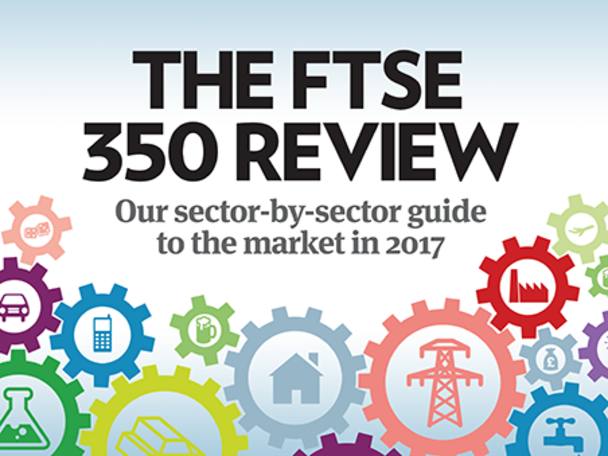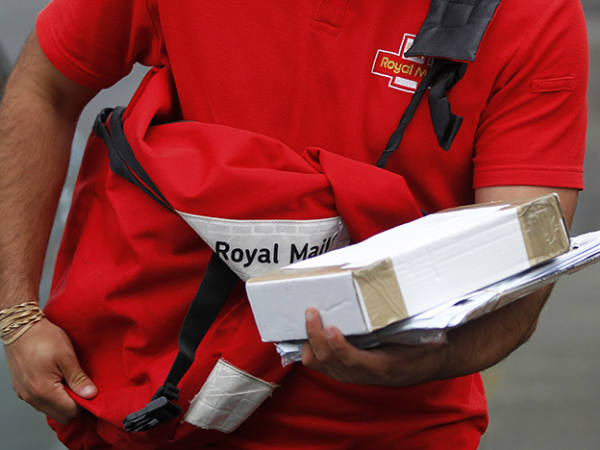Since 2010, the main factor in the long equities bull-run has been the impact of quantitative easing (QE) and ultra-low interest rates. On the rising tide of easy money, passively investing in whole of market indices has been an effective strategy which, thanks to the availability of low-cost exchange traded funds (ETFs), is simple to implement. As market prices have risen, more innovative products to capture passive upside have emerged, many of which are essentially stock screens looking for specific risk-return factors (so-called ‘smart beta’). With methodologies becoming more complex, however, it is worthwhile considering the benefits of having an active manager to sift through automated results. Over the past six months or so, the return to prominence of value investing (whereby share prices gain from the market re-rating companies’ earning capacity), has also signalled that it is too soon to discard the expertise of stock pickers who prove their worth sorting the wheat from the chaff.
As part of last year’s FTSE 350 review, we ran through some of the most common financial ratios that analysts use to assess share valuations, as well as how companies measure up against sector peers in terms of cash flow, solvency, quality of earnings, income and dividend safety. For 2017, we have applied some of these ratios to compare similar FTSE 350 companies to create a UK equities portfolio for the year ahead. However, rather than relying just on automated selections, the work of Investors Chronicle’s specialist writers has been consulted to pick companies from each major sector.
The list of FTSE 350 companies was downloaded using S&P Capital IQ software and a selection of their out-of-the-box financial ratios were also pulled. The parameters chosen for the data was trailing analysis for the last 12 months; this means that some of the base figures used for ratios will differ from full-year financial statements. The FTSE 350 was split into the 11 primary sectors S&P use. Within these, there are several sub-categories and it is only really companies in the same industry that are valid for comparison.
The first aspect of active decision making therefore, is how the portfolio is diversified across sectors. Arbitrarily, it was decided to include two stocks from each primary sector but this doesn’t mean conducting a pointless direct comparison of say, in the Consumer Discretionary sector, Advertising and Homebuilding companies. Instead, the exercise was to make a normative judgement – namely which stocks that fell under each sector umbrella looked most attractive versus companies in the same industry. In the case of the highly varied Consumer Discretionary classification, the picks were Berkeley Group (BKG), from homebuilders, and Compass Group (CPG) from restaurants.
Picks by sector
Berkeley Group is attractive because it is trading on just under nine times earnings, which is a lower multiple than other homebuilders. A key quality measure, is the return on equity (ROE) that a company generates and at Berkeley, the 25 per cent return management has achieved on shareholders’ capital rates well against peers. Allied with a 6.9 per cent dividend yield, covered 1.7 times by earnings, this made it too good to overlook for its parent sector.
Compass Group, with a trailing PE of 24, is not the cheapest restaurant group but on quality the 44 per cent ROE is hard to argue with. One negative screening criteria, the ratio of a company’s equity finance to debt, is high for Compass relative to other Consumer Discretionary stocks. This, however, serves only to highlight the importance of restricting comparison between stocks in the same industry; as restaurant groups go the 135 per cent debt to equity is not uncommon and, as our analysis of Compass’s business suggests, this is a robust company.
Moving to Consumer Staples the first pick is soft drinks manufacturer Britvic (BVIC). Again, a 46 per cent return on equity over the last 12 months is impressive and the dividend yield of nearly 4.2 per cent is also covered 1.7 times by earnings.
Historically, tobacco has been a classic defensive and income play, and British American Tobacco (BATS) is our second Consumer Staples stock. True, rival Imperial Brands (IMB) has a higher yield and looks cheaper on a forward price to earnings basis but BATS’s 71 per cent return on common equity is impressive, and suggests that the company can make good on the acquisition of Reynolds American. The 3.3 per cent dividend, while less then IMB, is also not to be sniffed at.
Energy stocks have been amongst the big drivers of the value recovery story in the second half of 2016. This has had an impact on the market cap weighted FTSE 100 as its biggest company, Royal Dutch Shell (RDSB) has rallied strongly. Shell makes it into this portfolio, not only on the basis of its relative attractiveness to BP (BP.) – the only UK-listed company that it can be reasonably compared with – but also thanks to the way it stacks up against other global behemoths. Trailing earnings still shows up the impact of the weaker phase in the oil price, so a far better way to assess the valuation of oil producers is by the ratio of enterprise value (the measure of a company’s value measured by all claims on capital – i.e. debt (minus cash and cash equivalents) and equity holders - to EBITDA (earnings before interest, tax, depreciation and amortisation – a measure which strips out many accounting anomalies in representing profit). Shell’s EV/EBITDA is, at just under 13 times, more expensive than BP (10 times) but it is cheaper than US rivals like ExxonMobil (US:XOM) and Chevron (US:CVX) (which are both at around 20 times).
Our smaller sized energy selection – Cairn Energy (CNE) - is a pure value play. The way to measure these opportunities in the oil & gas exploration industry is to compare the enterprise value of the business (in millions of pounds) to the proven and probable reserves (in millions of barrels or equivalent) of the business. In the case of Cairn, this ratio is showing at only 2:1 over the past twelve months, thanks to shrewd building of its asset base at a time when rivals were instead struggling to protect dividends.
Sticking with the value theme, after years in the doldrums following the financial crisis, many investors haven’t wanted to touch banking stocks with a dirty stick. Low interest rates have been an impediment to profits; and fines and compensation for the scandals in the boom years plus new regulation – have been a drag too. Maybe the global value rally has fostered overconfidence but it now seems worthwhile having some exposure to the big banks again. Of these, Lloyds Banking Group (LLOY) has an attractive dividend yield of 4.55 per cent and could prove more a value play than a value trap. True, the yield is lower than for HSBC (HSBA) but the FTSE 100’s biggest bank by market cap has significant Asian exposures that, while a source of strength in the past (and for the long term), could see it exposed when emerging economies face headwinds due to dollar strength in 2017.
Elsewhere in the broad financial sector, we include life insurer Legal and General (LGEN). The company doesn’t look hideously expensive at 12 times earnings and the dividend yield of 5.4 per cent is covered one-and-a-half times. At 66 per cent, the proportion of earnings paid out to shareholders (the pay-out ratio) is high relative to other industries but this is still less than other, less well covered, dividend payers within the company’s direct peer group. This points to its dividend being more sustainable than those paid by rivals.
Healthcare is another defensive sector where quality companies have become expensive over the past few years. Picking stocks with further to go is just as difficult, if not more so, than uncovering the genuinely cheap value investments. For a solid large cap pharmaceutical investment, we have chosen Astrazeneca (AZN) – which although on a high multiple is not the most expensive company in the sector. Investors Chronicle’s analysis of the company suggests that a solid ROE performance could be maintained thanks to a potentially lucrative research pipeline, so we are happy to buy in for this portfolio.
UDG Healthcare (UDG) is another not inexpensive selection, chosen because it has a good margin of free cash flow (25 per cent) and a strong balance sheet - the current ratio (the ratio of current assets to current liabilities) is 2:1. Alongside these solid fundamentals, UDG has been chosen because we like the growth opportunities.
In the industrials sector, Aerospace and defence giant BAE Systems (BA.) is trading on an EV/EBITDA multiple of 12 – not cheap, but a price that could be justified by a leading global player with strong overseas earnings (and hence a beneficiary of the weaker pound) in an industry with growth potential. The second industrial company picked is Bodycote (BOY) – a specialist industrial paint coating provider – with a solid balance sheet and a well-covered 3.9 per cent dividend.
Information technology stocks are often growth investments which, in anticipation of jam tomorrow, can trade on higher PE multiples. Our first company from this sector, Playtech (PTEC) is not exactly a new start-up but has proven itself a reliable cash-generator and has shown steady growth both organically and through acquisitions – the dividend yield of nearly 3 per cent isn’t bad either. We’ve also plumped for Moneysupermarket.com (MONY) from the IT sector - 45 per cent ROE, dividend yield of 3 per cent and a healthy operational cash flow mean that, while the shares aren’t cheap (trailing 12 month PE is 23), they have solid quality characteristics.
Mining stocks have been another value play of the past half year but deciding the best in this sector is difficult from either the numbers or qualitative judgements on the idiosyncratic risks and challenges faced by individual firms. Of the mining firms, I have gone with Rio Tinto, on the basis that it is trading on a lower EV/EBITDA multiple (roughly 10 times) than other companies like BHP Billiton (BLT) and Glencore (GLEN), which are on about 13 times each. Unlike these close rivals who both had a negative ROE over the last 12 months, Rio Tinto’s return on shareholders’ funds was flat. Finally, there is the matter of the dividend; it may have been cut and the sustainability may be questionable but Rio has at least protected more of its pay-out to shareholders.
Specialty chemicals manufacturer Synthomer (SYNT) is the second Materials sector pick. It was a toss-up between Victrex (VCT) and Synthomer in this industry - SYNT is cheaper going on PE or EV/EBITDA and has a higher ROE (30 per cent versus 22 per cent for VCT). These points made, the ROE for Victrex is good too and the shares are far from the priciest in the sector. The reason for going with VCT would have been its slightly better acid test ratio (current assets minus inventory divided by current liabilities) which measures the ability of the company to cover its short term debts. On balance, however, SYNT has an acid test ratio of almost 1 and also generates positive cash flows, so is not terribly low on quality; therefore its slightly better value credentials see it selected here.
For the final three sectors, we again apply some active manager discretion by limiting ourselves to just one company each. In the case of Real Estate companies this is because, having already taken a house builder for the Consumer Discretionary sector, we wanted to cap exposure to UK property. The company chosen is Savills (SVS) which – thanks to operational diversification - has outperformed peers. The positive cash position, ROE of 20 per cent and 3.8 per cent dividend (covered 1.8 times) are testimony to a company being best in class, in a sector facing headwinds in 2017.
Telecommunications services is a sector in which the UK market offers poor choice by comparison to others overseas. Going by broadly positive fundamentals in terms of return on equity (21 per cent), current ratio (1.57:1) and dividend yield (5.3 per cent, covered 1.4 times) our tip of the year, Inmarsat (ISAT) looks the best bet. Some investors will rightly baulk at long-term debt, which is 196 per cent of equity, but EV/EBITDA of 13 times and positive free cash flows suggest that this is manageable.
Finally, looking at utilities, we only have one pick here as overall the sector, which is short on potential for growth, looks expensive. These are defensive, low volatility stocks and most return would be expected to come from dividends. United Utilities (UU.) with a yield of 4.3 per cent, covered 1.6 times, trades on a trailing PE of 14. This is low relative to the sector, so UU is our choice here.
What to expect from this best of the FTSE 350 portfolio
Having whittled down 350 companies into a sector-diversified selection of just 19, what chances does this selection have of beating the market? The point needs to be made that our equal-weight portfolio could underperform if a few of the larger sectors by market capitalisation make the biggest gains in 2017. It is also therefore possible that any performance differential is not alpha (down to active decisions) but is a result of beta (from the equal-weighting).
Furthermore, buying companies in each sector may not necessarily be the best way to go about diversification. In certain sectors, the UK-listed universe offers weaker choice and there may be more to be gained by buying a themed fund or investment trust, which pick stocks from a global universe, to gain exposure to themes like technology.
In truth, this is an academic exercise, to assess whether shares that are apparently best in class according to a human interpretation of backward looking financial ratios can outperform going forward. Active management decisions have been made on which industries to represent in each sector; which sectors to under represent; and in consideration of the ratios. There will therefore be cognitive biases that influence the holdings and compelling arguments can surely be made for alternative investments in something as esoteric as a ‘best of’ portfolio. Ultimately, however, it is alternative views and opinions that make a market, so regardless of how we use robotic strategies to screen for companies, there will always be a place for active investing.
| Company | Ticker | Primary sector | Primary industry | Hypothetical investment |
|---|---|---|---|---|
| Berkeley | BKG | Consumer Discretionary | Housebuilding | £1,000 |
| Compass | CPG | Consumer Discretionary | Restaurants | £1,000 |
| Britvic | BVIC | Consumer Staples | Soft drinks | £1,000 |
| British American Tobacco | BATS | Consumer Staples | Tobacco | £1,000 |
| Royal Dutch Shell | RDSB | Energy | Integrated oil & gas | £1,000 |
| Cairn Energy | CNE | Energy | Oil & gas exploration | £1,000 |
| Lloyds Banking | LLOY | Financials | Diversified banks | £1,000 |
| Legal & General | LGEN | Financials | Life & health insurance | £1,000 |
| UDG Healthcare | UDG | Healthcare | Healthcare services | £1,000 |
| AstraZeneca | AZN | Healthcare | Pharmaceuticals | £1,000 |
| BAE Systems | BA. | Industrials | Aerospace & defence | £1,000 |
| Bodycote | BOY | Industrials | Industrial machinery | £1,000 |
| Monysupermarket.com | MONY | Information Technology | Internet software & services | £1,000 |
| Playtech | PTEC | Information Technology | Home entertainment software | £1,000 |
| Rio Tinto | RIO | Materials | Diversified metals & mining | £1,000 |
| Synthomer | SYNT | Materials | Speciality chemicals | £1,000 |
| Savills | SVS | Real Estate | Real estate services | £1,000 |
| Inmarsat | ISAT | Telecommunications Services | Alternative carriers | £1,000 |
| United Utilities | UU. | Utilities | Water utilities | £1,000 |
| £19,000 |
Source: Investors Chronicle and S&P Capital IQ








